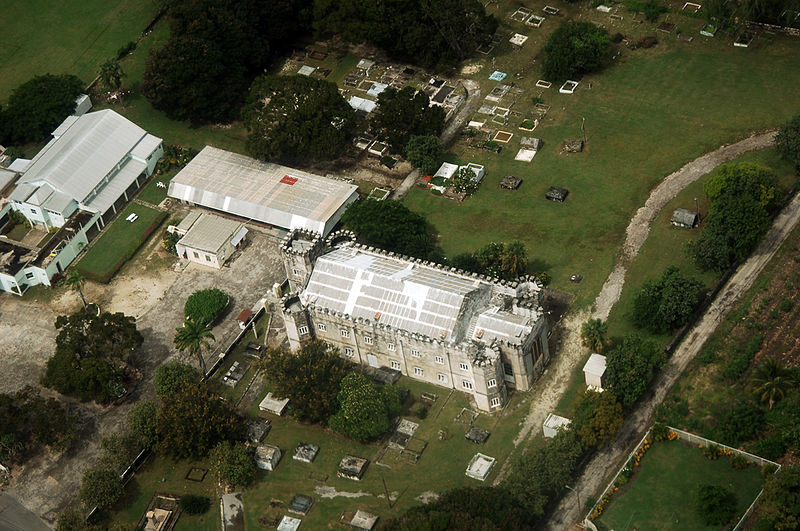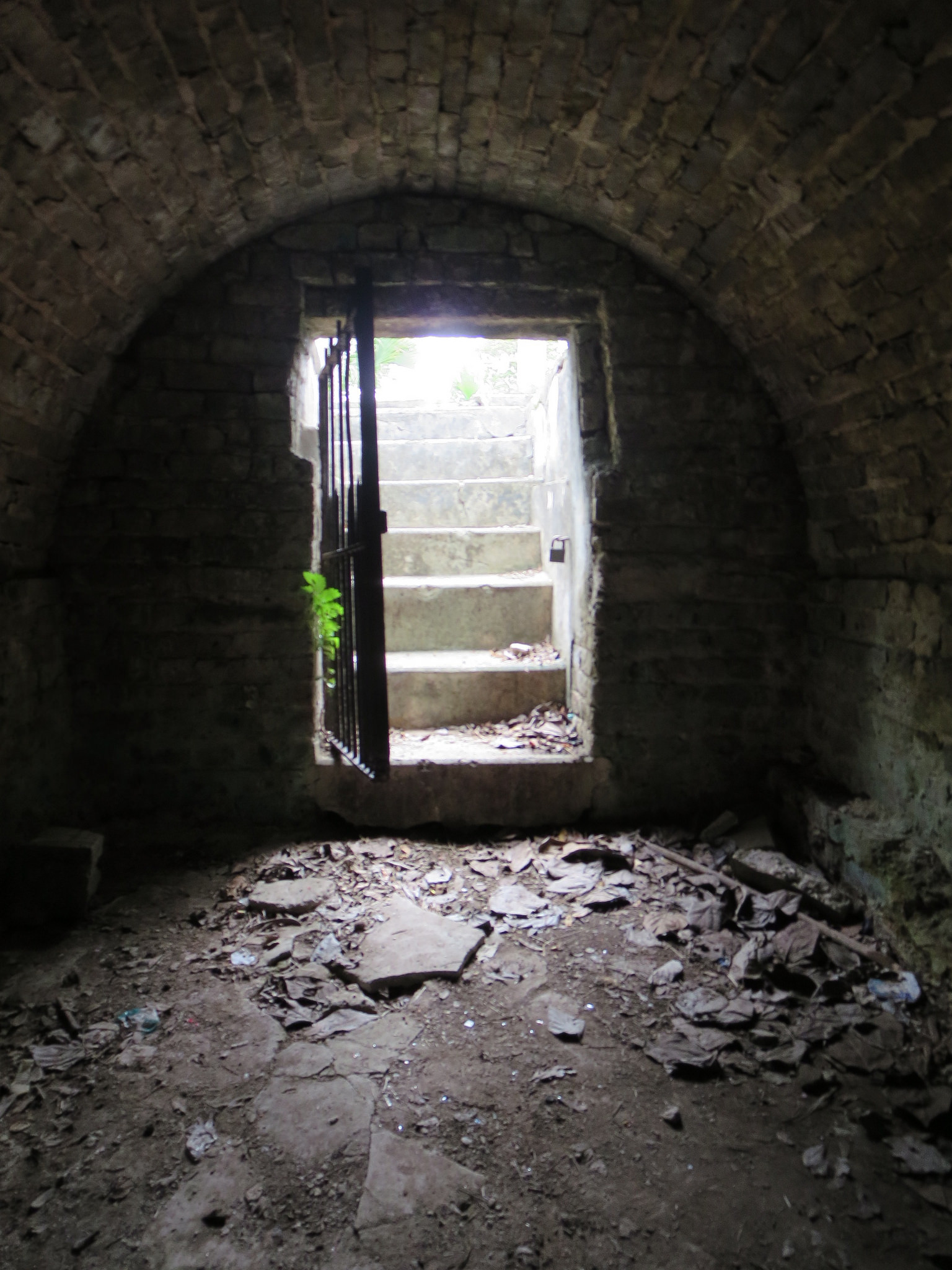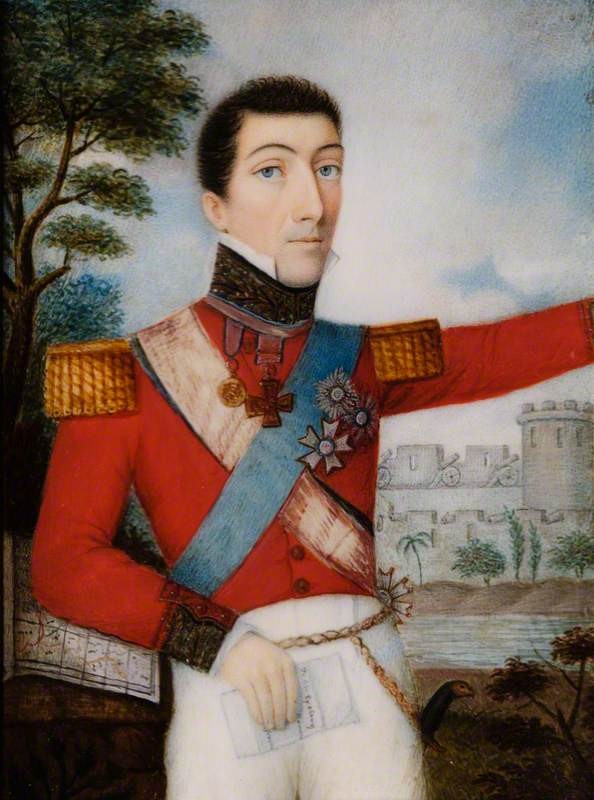- Submitted on
- 0 comments

(Image courtesy of Wikimedia Commons)
Unhappy spirits? Witchcraft? Seismic activity? Flooding? The Loyalist Collection has many hidden gems, but one of the most intriguing accounts is “An Unsolved Barbados Mystery” which was originally written by Sir Algernon Aspinall and summarized in a letter by Eleaner J. Dailey to Roger Senhouse. Cultural, spiritual, and scientific explanations have all been offered for the unusual activities that occurred in the Chase Vault at Christ Church Parish Church, Barbados during the early nineteenth century, but a consensus on the cause of events has yet to be reached.

(Image by socarra, flickr - Creative Commons)
From 1811 to 1821, multiple disturbances of lead coffins housed in the stone Chase Vault, located in the cemetery of the Christ Church Parish Church, took place. In Dailey’s letter discussing the phenomena she writes that “many people have been inclined to attribute them to poltergeists or other supernatural agencies.” The vault was “situated on the west end of the churchyard and is partly below and partly above the level of the surrounding ground. The lower portion is hewn out of Limestone, coral rock, which forms the core of Barbados, while the upper is constructed of block of the same material cemented together so firmly that in appearance it is one solid mass.”
The first disturbance of coffins was noticed in 1807. When the vault was opened for a funeral, the previously buried body of the Honourable James Elliot who died in 1784 was found to be missing. The following year in 1808, the baby daughter of the Honourable Thomas Chase was interred in the vault in a lead coffin; when the vault was again opened in 1812 for another daughter of Chase, the sister’s coffin was located upside down in the opposite corner of the crypt to which it had been placed. The mausoleum was once again opened for an infant burial in September of 1816 and “’the leaden coffins were again in disorder; so they were, too, on the 16th of Nov. when the body of Samuel Brewster, who had been murdered during the insurrection of the slaves, was interred” [referring to Bussa’s Rebellion], where, “Great confusion and disorder were discovered in the leaden coffins.” The situation was repeated again in 1819 for another entombment. After each burial, however, the coffins were returned to their original positions and it was stated that “On every occasion when the coffins were found to have been disturbed they were replaced in their proper positions and ‘the mouth of the vault was regularly closed and cemented by masons, in the presence of the Rector and some other persons.’ It has been said, too, that the floor was sanded to enable any footprints to be detected, no traces of any were noticed.”

(Image courtesy of the National Trust for Scotland, Leith Hall Garden and Estate; Photographer: Mike Davidson)
It has been reputed that the crypt was investigated at the time of the disturbances by the Governor of Barbados, Sir Stapleton Cotton, the first Baron Combermere. In 1820, the Governor was a guest “of a Mr. Clarke whose estate adjoined Christ Church, the coffins becoming a subject of conversation one noon, the Rector of the church was asked by Lord Combermere that the vault be opened and consent being given and workmen obtained the little company started out . . . The arduous task of opening the vault having been completed, it was seen at once that the coffins had again been disturbed and that the largest of them, which it was said would have taken six men to raise, had been ‘set upon and against the wall’” as described in Dailey’s letter.
Some of the explanations that have been proposed and refuted to explain the movement of the coffins are: body snatchers; changes in the water table or flooding (“the remains of the wooden coffin there, which would have been the first to float, were exactly where they had been placed. There was no water or traces of its having been there”); and earthquakes or tremors, which were also discounted as the rest of the graveyard was untouched. It is up to the reader to decide on the most plausible explanation for the events at the Chase Vault, or remain baffled.
All background information and quotes are derived from “An Unsolved Barbados Mystery,” written bu Sir Algernon Aspinall and summarized in a letter by Eleaner J. Dailey to Roger Senhouse, Appended to "Observations on Barbados" by Joseph Senhouse, 1780, in Material Relating to the West Indies from the Senhouse Papers : 1762 - 1831. MIC-Loyalist FC LFR .S4J6P3.
For other versions and explanations of the events at Christ Church Parish graveyard for consideration see the following links:
The first popular published accounts of the story was by James Edward Alexander and entitled Transatlantic sketches: comprising visits to the most interesting scenes in North and South America, and the West Indies, with notes on Negro slavery and Canadian emigration which can be found on archive.org.
The Moving Coffins of Barbados by Skeptoid
The Moving Coffins of Barbados by Awesome Mysteries You’ve Never Heard Of found at slightlywarped.com
The Spine-chilling Tale of the Chase Vault by Albert Jack
Leah Grandy holds a PhD in History and works as a Microforms Assistant at the Harriet Irving Library.

Add new comment